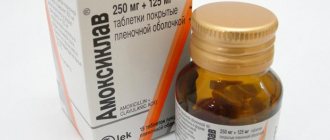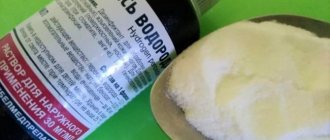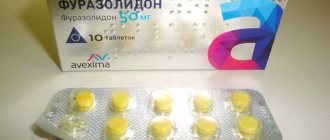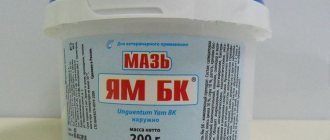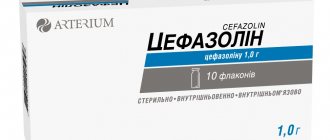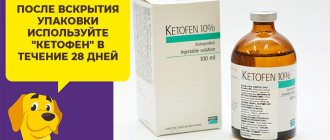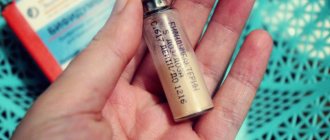03/21/2019 Drozd Nikolaevich Animals Eye pathologies are a fairly common occurrence in cats. The leading position among them is occupied by conjunctivitis, which greatly worsens the animal’s quality of life and also leads to serious consequences. In addition, there are other diseases: mycoplasmosis, chlamydia, glaucoma, allergic reactions and various injuries. Levomycetin eye drops for cats will help cope with many diseases. But you need to use them correctly and know the required dosage.
Eye diseases and their signs
Initially, you should consider the symptoms of inflammatory processes:
- Watery eyes and a reddened cornea indicate inflammation. This may indicate the following problems: rhinotracheitis, conjunctivitis, mycoplasmosis, chlamydia, trauma, vascular keratitis.
- Swollen eyelids in a cat may be a symptom of an allergic reaction to any foods, apartment cleaning products, medications or other allergens.
- If the lens, cornea becomes cloudy, or loses its shine, you should immediately contact a veterinarian. This may be a sign of serious diseases: intoxication, glaucoma, optic nerve atrophy.
- If your pet has an eye injury, your pet may ooze watery fluid, ichor, or blood. In this case, surgery and immediate specialist assistance are often required.
The presence of any suspicious symptoms should be discussed with your veterinarian. Only he can identify the problem and prescribe proper treatment.
General instructions for use of the drug in veterinary medicine
Levomycetin is allowed to be used to treat cats only as prescribed by a veterinarian. The specialist will make an accurate diagnosis and determine the dosage that is safe for the pet’s body. If necessary, a laboratory test, such as a general blood test, is prescribed.
This medication is used to treat pets only when there are no other antimicrobial agents available, and antibiotics are indispensable.
The specialist determines the dosage and duration of therapy depending on the age of the animal, its condition and weight. Oral or topical application - depends on the disease. Before starting treatment, it is recommended to weigh the animal in order to accurately calculate the dose of the medication.
Indications for Levomycetin
This drug is prescribed for eye pathology, which often occurs in cats and leads to a deterioration in their quality of life. Eye drops help cope with the symptoms of inflammatory processes. They relieve swelling of the eyelid, which can occur due to an allergic reaction to food, medicine or chemicals used to clean the house.
The drug is also used after eye injuries, when ichor is released or a watery fluid oozes.
Veterinarians prescribe Levomycetin tablets to cats for diarrhea caused by pathogenic microflora. For diarrhea, the drug helps reduce the rate of bacterial development in the animal’s body. The medicine acts purposefully, destroys microbial cells, preventing their nutrition and reproduction.
The tablet form is prescribed for indigestion, vomiting, dehydration, when symptoms are caused by E. coli, salmonella or intestinal infection.
The tablets taste bitter and are difficult to give to a cat. If it is not possible to administer the medicine orally, you can use an injection solution. The contents of the bottle are diluted with a 0.5% solution of novocaine or sodium chloride. It is recommended to give injections at a veterinary clinic to avoid complications.
Description of the drug
"Levomycetin" for cats and people is available in the form of a clear yellowish liquid. The medicine contains chloramphenicol, boric acid and additional ingredients. The product is sold in plastic dropper bottles, which are equipped with protective caps and dispensers. "Levomycetin" contains an antibacterial substance with the same name.
It has a detrimental effect on many pathogens of infectious diseases. The drug is believed to be effective against strains of bacteria resistant to streptomycin, penicillin and sulfonamides. It is worth knowing that the medication does not suppress the activity of anaerobes and acid-resistant bacteria.
Is it possible to drip "Levomycetin" to cats? Most veterinarians answer this question positively. All components included in the product are well tolerated by animals and are effective in the treatment of many eye pathologies.
Release form
Taking into account the widest list of bacteria susceptible to chloramphenicol, Levomycetin can be effectively used to treat many diseases, and therefore this drug is available in different forms - both for internal and external use.
In particular, the medicine can be found in the form of:
- tablets (0.25 or 0.5 g);
- alcohol solution;
- powder for self-preparation of working solution;
- eye drops.
However, all these varieties of Levomycetin can be purchased only in regular pharmacies. There are no special veterinary forms of the drug, although it is very popular not only in the treatment of cats and other pets, but also in industrial animal husbandry (the drug is often used for the prevention and treatment of bacterial infections in large and small livestock and even poultry).
Indications for use
Experts prescribe levomycetin drips for cats when it is necessary to provide an antimicrobial effect. Since this drug helps get rid of many strains of bacteria, it is often used to treat infectious diseases or to prevent ophthalmic diseases.
The medicine has a quick local effect and helps to cure not only the eyes, but also the nose. These drops are best used for infectious diseases, including:
- chronic or acute conjunctivitis;
- corneal ulcer;
- keratitis;
- blepharitis.
In addition, Levomycetin eye drops for cats are prescribed if other drugs cannot overcome pathologies caused by an infectious pathogen. The medication can also be used in the postoperative period to treat the organs of vision from bacteria to prevent infection.
It should be understood that the medication will remain powerless if lacrimation and other symptoms are the result of any disease of the internal organs.
special instructions
Levomycetin should be applied to cats' eyes only as a last resort, when there are no other treatment options and antibiotic therapy cannot be avoided. It is believed that cats are most predisposed to developing side symptoms from Levomycetin. Experienced veterinarians recommend conducting an allergy test before using it to treat furry cats.
Interaction
The combination of an antibiotic and Cyclophosphamide should be avoided.
The antibacterial agent Levomycetin combines well with other medications, especially vitamins A and B. But it can only be combined with other medications as prescribed by a veterinarian.
A tandem of Levomycetin with other antibiotics, as well as with the antiepileptic drug Phenobarbital and the antitumor drug Cyclophosphamide, will be extremely dangerous for a cat.
Can a cat have Levomycetin?
Veterinarians prescribe this drug to pets suffering from chronic and acute ophthalmic pathologies caused by bacteria sensitive to this medication. The remedy has proven itself well for conjunctivitis (catarrhal, purulent, follicular), blepharitis and keratitis.
"Levomycetin" is also used to prevent complications after operations and for infected eye wounds. After using the drug, therapeutic concentrations are formed in the cornea, aqueous humor of the eye, vitreous body and iris.
Description and characteristics of drops
The active ingredient of Levomycetin is chloramphenicol: it is a broad-spectrum antibiotic belonging to the amphenicol group. In nature, chloramphenicol is found as a waste product of bacteria of the genus Streptomycetes, but modern pharmacology uses a synthetic analogue of the substance.
In particular, chloramphenicol is used to treat infections caused by:
- staphylococci;
- streptococci;
- gonococci;
- meningococci;
- coli;
- Haemophilus influenzae;
- salmonella;
- shigella;
- Klebsiella;
- serrations;
- Yersinia;
- proteus;
- rickettsia;
- spirochetes;
- some types of chlamydia (including those that cause psittacosis and trachoma).
Among the microorganisms for which the use of Levomycetin usually does not give the desired effect are Pseudomonas aeruginosa, Clostridium, most protozoa, lower fungi, as well as bacteria resistant to an acidic environment.
However, infections caused by these and other antibiotic-resistant microorganisms can be treated with Levomycetin by combining it with other antibiotics, in particular benzylpenicillin, tetracycline and streptomycin.
"Levomycetin" is well absorbed into the blood from the gastrointestinal tract and reaches its maximum concentration 2-3 hours after oral administration. This effect lasts for 4–5 hours, then gradually decreases. Complete elimination of the drug from the body occurs 8–12 hours after a single dose and within 24 hours after completion of the course of treatment.
A feature of the active substance “Levomycetin” is also that it can accumulate in the iris, cornea, vitreous body and aqueous humor of the eyes, without penetrating into the lens, which determines the widespread use of the drug in ophthalmology.
Levomycetin is excreted from the body mainly through urine, in small quantities with feces and bile, although an overdose can cause accumulation of the antibiotic in the lungs, kidneys, liver and spleen
Treatment course
It should be understood that any medicine must be prescribed by a veterinarian. As a rule, the dosage of “Levomycetin” for a cat is determined by a specialist. Most often, for a complete recovery, drops are used three or four times a day, with 1-2 drops instilled into each eye. The duration of treatment is from five to seven days. However, the therapeutic course can be increased until the symptoms of the disease completely disappear.
How to use the drug correctly
How to put Levomycetin in the eyes of a cat? After visiting the veterinarian and prescribing the medication, you must read the instructions for use. After all, the guarantee of an animal’s health and the effectiveness of treatment depend not only on a well-chosen product, but also on its correct use.
There is no need to worry that your pet will be in pain, because the procedure for instilling Levomycetin into the eyes of a cat is painless. It can only cause discomfort. To carry it out correctly, you need to take the animal on your lap. If the pet breaks out, it should be calmed and stroked. It is advisable for the cat to sit with its back to the owner. In this position, she will not see the bottle and will be less afraid.
Before the procedure, you need to wash the hair around the eyes with a damp swab dipped in boiled water. The eyes, cleared of purulent discharge, should be carefully opened, pulling back the lower eyelid, and the cat should be given Levomycetin. In this case, the animal may begin to twitch and break free. It is best to hold your pet in your arms for a few minutes after instillation, and do not let him scratch or wash his eyes. The medicine may sting your eyelids a little. Treatment must be repeated according to the veterinarian's instructions.
Can Levomycetin be used for diarrhea in children?
Our readers successfully use Monastic Tea to treat gastritis and ulcers.
Seeing how popular this product is, we decided to bring it to your attention. Read more here... Levomycetin is a drug that belongs to the category of synthetic antibiotics with antimicrobial action. It has a wide spectrum of action.
The use of this drug is to fight bacteria, since this medicine has unique bactericidal properties. This remedy is almost instantly completely absorbed from the stomach and absorbed into the blood. Within one to three hours the highest concentration of the drug is achieved. Easily passes into breast milk. Most of this drug gets into the kidneys. If you use it for a long time, it may have bad effects on your health over time.
The action of the drug is based on interfering with the protein synthesis of certain bacteria.
In this regard, it is considered an unsafe substance, although it does not cause significant harm if you do not get carried away with its use.
Can it be used for diarrhea in children and does it help?
Levomycetin can be given to children for diarrhea, although it is prescribed quite rarely when it is not possible to use drugs that are less harmful to health.
When answering the question whether children can take chloramphenicol for diarrhea, you need to take into account that it is prescribed extremely rarely, only when less harmful medications for diarrhea are not available. In tiny patients, this drug causes a large number of side effects. This medicine is not allowed to be given to children for prophylactic purposes.
Levomycetin for diarrhea in children is given only as prescribed by a doctor. It must be taken under medical supervision, as it is a potent antibiotic that can cause a large number of side effects in children. This drug may not be effective, since the cause of childhood diarrhea is often a viral infection of the intestines, poisoning or overeating. In this case, antibiotics will not help. On the contrary, with this treatment, toxins are not removed from the child’s body; they are absorbed into the blood, which aggravates the baby’s condition.
An intestinal infection in a baby caused by a virus can go away on its own within one to three days. Therefore, parents who treated this condition in a child with chloramphenicol may have the false impression that the drug is helping. Diarrhea caused by poisoning stops as soon as the toxins are completely removed from the baby’s body.
Release forms
To treat diarrhea in children, chloramphenicol tablets with an active ingredient called chloramphenicol are produced in quantities of 250 and 500 mg. As excipients, the drug is supplemented with:
- potato starch;
- calcium stearate;
- low molecular weight medical polyvinylpyrrolidone.
Dosages, application regimen
The presence of loose and copious stools is diarrhea, the causes of which can be very different. Children's diarrhea may differ from that of an adult, but it must be remembered that as a symptom this phenomenon is not dangerous, but its consequences can be quite detrimental to the entire body. First of all, this condition can lead to dehydration. In this regard, to treat such an unpleasant problem that a child has, the potent drug chloramphenicol is very rarely used. The doctor must decide whether this drug can be given to a small patient.
Giving chloramphenicol to children is allowed in the following dosage per kilogram of body weight:
- for children under three years of age, 15 mg;
- from 3 to 8 years, 150-200 mg can be used;
- From 8 years old, 200-400 mg is prescribed.
One tablet should be taken 3-4 times over 24 hours. Tablets for children should be swallowed whole half an hour before meals.
Indications for use in children
Levomycetin tablets can be indicated for children with various diseases, as it is an antibiotic. It copes well with various infectious diseases:
- inflammatory-infectious nature, caused by microbes and bacteria, if they are sensitive to chloramphenicol;
- diseases of the biliary tract of long-term, chronic course;
- paratyphoid;
- purulent peritonitis;
- brucellosis;
- typhoid fever;
- pneumonia;
- sepsis and other diseases, if other antimicrobial drugs do not help the child.
Contraindications
This drug affects protein synthesis and can reduce the number of platelets in the blood. This effect of the drug can lead in some cases to bleeding. For mild diarrhea, it is advisable to use less strong remedies.
Contraindications and side effects
Only a veterinarian can prescribe a drug for the treatment of vision organs; Levomycetin eye drops for cats are no exception. Self-diagnosis at home can cause various complications. A contraindication to the use of the product is an allergy to the substances included in the composition, as well as chronic liver and kidney diseases.
Side effects when treating cats with Levomycetin are extremely rare. But still, in some situations, it can cause changes in the pet’s blood pressure, stomatitis, digestive disorders and enterocolitis. If suspicious signs occur, therapy should be stopped.
Levomycetin - an antibacterial drug for diarrhea
The most common causes of sudden onset of diarrhea are food poisoning or intestinal infections, which can be caused by pathogenic viruses, bacteria, protozoa or fungi entering the gastrointestinal tract. For bacterial intestinal infections, antibiotics must be present as part of complex treatment. They are also used for severe food poisoning. Such drugs include Levomycetin (or Chloramphenicol), which has long been used in medical practice. Levomycetin for diarrhea is prescribed mainly to adults, since it can cause serious side effects in children.
Effect of Levomycetin on diarrhea
Levomycetin is a broad-spectrum antibacterial agent and belongs to the amphenicol group. Its antibacterial activity is realized by inhibiting protein synthesis in bacterial cells and stopping their reproduction. Chloramphenicol exhibits a pronounced bacteriostatic effect against many strains of bacteria, including those resistant to tetracycline and penicillin antibiotics and sulfonamides.
It is effective against dysentery, typhoid fever, colienteritis, paratyphoid fever, cholera and other bacterial infections affecting the gastrointestinal tract, as it inhibits the growth and reproduction of the following pathogens:
- coli;
- bacteria of the genus Shigella;
- gram-positive bacteria of the genus Staphylococcus and Streptococcus;
- bacteria of the genus Salmonella, etc.
What to replace
In some cases, there is a need to replace “Levomycetin” for cats with some other product. There are many medications with similar effects. These include “Tsiprovet”, “Iris”, “Desacite”. Among the drugs that do not contain an antibiotic, “Bars”, “Laprikan”, “Tobrex” are used, which are aimed at treating keratitis and conjunctivitis.
In addition, for inflammation of the eyes, you can use “Ananadine” or “Diamond”. And to relieve an allergic reaction, the following are used: “Alomid”, “Histimet” and “Barrier”.
Analogues and prices
"Levomycetin" is not a very expensive drug. Chloramphenicol-based products are produced by many pharmacological companies, including Russian and Ukrainian ones, so the price does not include any imported markups.
Depending on the release form and brand, the average prices for this type of medicine fluctuate within the following limits:
| Release form | Average price in Russia, rub. | Average price in Ukraine, UAH |
| Tablets, 0.5 g No. 10 | 30–105 | 25–33 |
| Eye drops | 9–15 | 13–18 |
| Alcohol solution, 1% | 40–55 | 7–10 |
There are usually no problems with purchasing Levomycetin, both in tablets and drops, but in some cases a pet can be helped with milder medications.
As an alternative to using chloramphenicol drops, the veterinarian may recommend dripping one of the following into the kitten’s eyes:
- "Tsiprolet". The active ingredient is ciprofloxacin, a broad-spectrum antibiotic effective against staphylococci, chlamydia, Pseudomonas aeruginosa and other bacteria. It is considered safe even for treating kittens.
- "Tsiprovet." A drug with the same active ingredient as Tsiprolet, but produced in special dosage forms for cats and dogs.
- "Gentamicin." An antibiotic used exclusively in ophthalmology - for the treatment of eye infections of a bacterial nature, as well as for injuries and wounds of the organs of vision to prevent infection.
- "Iris". A drug based on gentamicin.
- "Diamond Eyes" Veterinary drug based on chlorhexidine. It is not an antibiotic, but has a pronounced antiseptic and anti-inflammatory effect.
- "Leopard". A veterinary drug for cats and dogs in the form of eye drops based on chloramphenicol, but with the additional addition of furacilin, another powerful antimicrobial agent.
- "Anandin." The active substance is the antibiotic gramicidin, which is active against many pathogens. The drug is prescribed to cats and dogs for instillation into both the eyes and ears.
- "Dekta-2". The active ingredient is the antibiotic gentamicin. The drug, unlike Levomycetin, is available in the form of eye drops specifically for cats.
Review of the most popular drugs
"Diamond eyes" - have antibacterial and anti-inflammatory effects. The active substance is chlorhexidine. It reduces the activity of bacteria and destroys their cells at the development stage. Succinic acid and taurine, included in the product as auxiliary components, restore the mucous membrane of the cornea and activate the healing of healthy cells. The product is used to treat eye diseases in cats. Before use, remove purulent discharge with a gauze swab soaked in the drug, then instill one drop into each eye. Treatment is carried out two or three times a day. The treatment course lasts from 5 days to two weeks.
"Bars" is an effective drug that is also prescribed for eye diseases in animals. Suitable for both kittens and adult cats. The medicine includes components such as novocaine and furatsilin. The latter has a disinfecting effect, and novocaine is used as an anesthetic ingredient. Bars drops are used to treat keratitis, purulent conjunctivitis and other infectious pathologies. They can also be used for preventive purposes. The duration of therapy ranges from one week to 10 days. This drug is prescribed to kittens after reaching one week of age. Small pets are not given “Leopard” instillations, but lotions are given. Adults are given two to three drops up to three times a day.
Iris is another popular medicine for cats that helps fight inflammatory eye diseases. The drug has a bactericidal effect and is effective in the treatment of conjunctivitis, blepharitis, and corneal ulcers. The instructions indicate that you need to instill “Iris” one or two drops into each eye for 7-14 days.
"Tsiprovet" - eye drops for cats. Contains the antibiotic ciprofloxacin. This substance has a wide spectrum of action. It kills various types of bacteria: Staphylococcus aureus, chlamydia, coccal infections, Pseudomonas aeruginosa and other gram-negative intracellular organisms. "Tsiprovet" can be used for kittens. Before the procedure, the area around the eyes is cleaned with a napkin, then the drug is instilled in an amount of 3-4 drops. The treatment course lasts from one to two weeks.
Storage conditions
Chloramphenicol, like any other antibiotics, belongs to the category of drugs, the storage of which must include mandatory protection from exposure to:
Therefore, the drug must be stored in a dry, dark place at room temperature (permissible range is +15...+25°C). The shelf life of chloramphenicol preparations may vary - it depends on the manufacturer and the form of release. For example, eye drops and alcohol solution are stored for an average of 2 years, tablets - up to 5 years, powder - up to 8 years. You should always look for specific information on this matter on the packaging. You should also always remember that printed medicine in the form of drops must be used within 24 hours. However, if maximum precautions are taken (clean hands, disposable pipettes or syringes, treating the neck of the bottle with alcohol after use and before the next use, storing the container wrapped in sterile gauze or steamed cloth), this period can be extended for the entire course of treatment, but no more than for 7 days.
